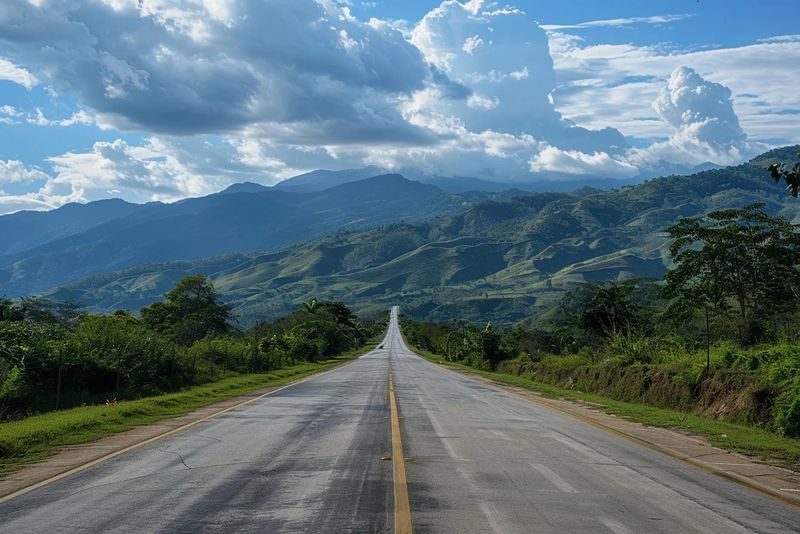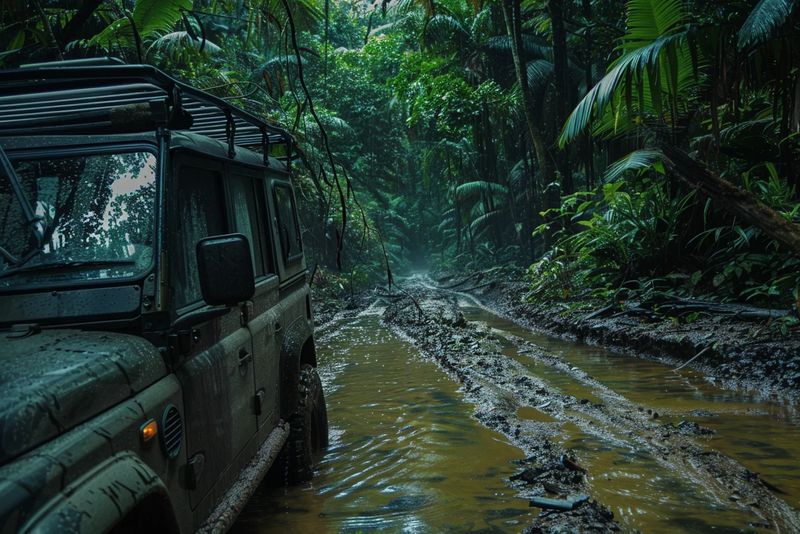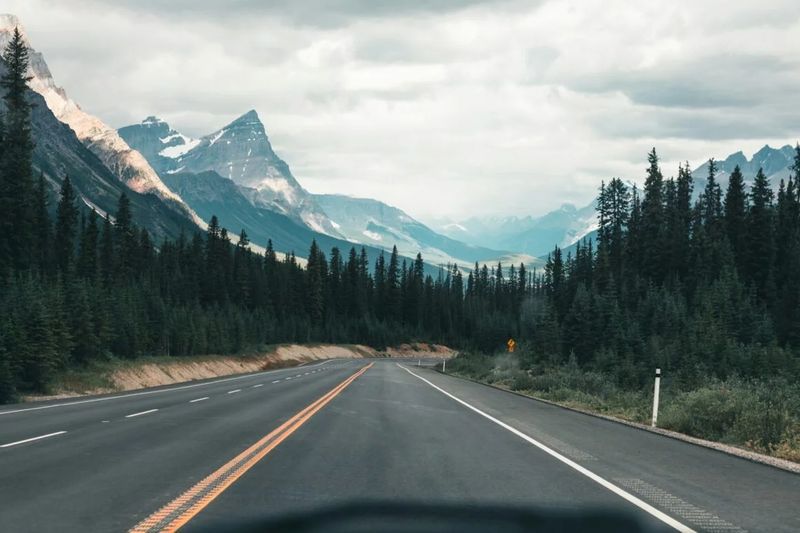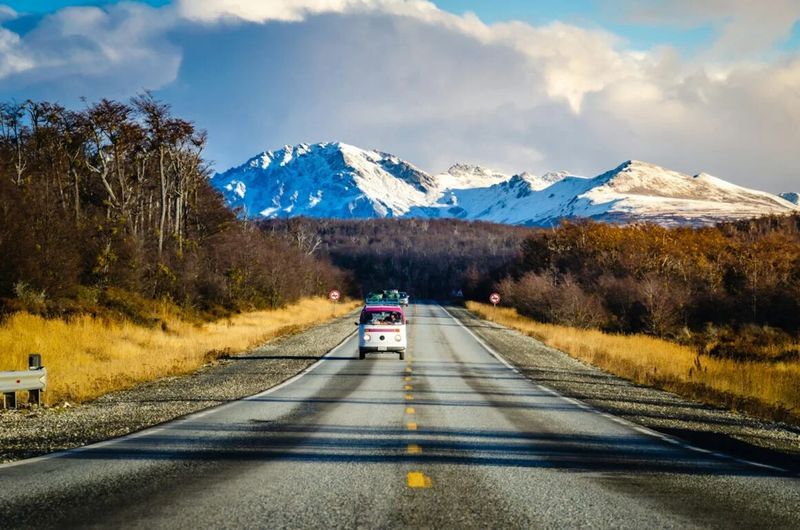
The Pan-American Highway is recognized as the world’s longest drivable road, extending an astonishing 48,000 kilometers (29,825 miles). This remarkable route is more than just a road; it’s an odyssey that traverses from the icy reaches of Alaska to the sun-soaked southern tip of Argentina, providing an unmatched journey through the varied landscapes and cultures of North and South America.
In this article, we’ll delve into the Pan-American Highway, exploring its rich history, the countries it traverses, and the remarkable experiences it offers to those who dare to embark on this extraordinary road trip.
A Brief History
The Pan-American Highway, conceived in the 1920s as part of an ambitious vision to connect the entire American continent by road, has evolved into an iconic route. Initially proposed at the Fifth International Conference of American States in 1923, the project aimed to foster unity and economic cooperation among the nations of the Americas. Construction began in earnest during the 1930s, with each country responsible for building its section of the highway. Over the decades, the Pan-American Highway has expanded and improved, becoming a symbol of intercontinental connectivity and a testament to human engineering and perseverance.

The Route
The Pan-American Highway spans a vast array of terrains and climates, making it one of the most diverse and challenging road trips in the world. Here’s a breakdown of the key segments:
1. North America:
- Alaska (USA): Begins in Prudhoe Bay, traversing the rugged Alaskan wilderness.
- Canada: Crosses through British Columbia, offering stunning mountain and forest landscapes.
- United States: Travels through the western states, including the scenic Pacific Northwest and down into California.
2. Central America:
- Mexico: Passes through cities like Tijuana, Mexico City, and stretches to the southern border.
- Guatemala, El Salvador, Honduras, Nicaragua, Costa Rica, Panama: The highway winds through these countries, showcasing vibrant cultures and beautiful scenery, from volcanic landscapes to tropical rainforests.
3. The Darién Gap:
- Colombia and Panama: This 160-kilometer stretch of dense jungle and swampland remains impassable by vehicle, requiring detours or alternative transportation.
4. South America:
- Colombia: Resumes in Turbo, moving through mountainous terrains and lush landscapes.
- Ecuador, Peru: Continues along the Andean mountains and coastal deserts.
- Chile: Runs through the length of the country, from the Atacama Desert in the north to the lush wine regions in the south.
- Argentina: Ends at Ushuaia in Tierra del Fuego, the southernmost city in the world.
Highlights and Experiences
Traveling the Pan-American Highway offers an array of unforgettable experiences:
- Natural Wonders: Witness the breathtaking glaciers in Alaska, the vast deserts in Mexico and Peru, and the majestic Andes mountains.
- Cultural Richness: Experience the diverse cultures, from indigenous communities in Guatemala to vibrant urban life in cities like Mexico City and Santiago.
- Adventure Opportunities: Engage in activities like hiking in national parks, exploring ancient ruins, and enjoying coastal drives along some of the world’s most beautiful shorelines.
Embarking on this journey not only provides a deep appreciation for the natural beauty and cultural richness of the Americas but also the thrill of conquering the world’s longest drivable road.
The Darién Gap
The Darién Gap, a notorious stretch between Panama and Colombia, presents a formidable challenge for those traversing the Pan-American Highway. Spanning approximately 160 kilometers (about 100 miles), this region is characterized by dense jungle, swampland, and mountainous terrain, making it nearly impassable by conventional vehicles.

Geographic and Environmental Challenges
- Dense Jungle: The thick, impenetrable rainforest is home to a myriad of plant and animal species, some of which are unique to the region. The dense foliage and challenging topography make road construction and navigation extremely difficult.
- Swamplands: The Darién Gap includes extensive swampy areas, which are prone to flooding and are challenging to cross due to deep mud and waterlogged terrain.
- Mountains: Rugged mountainous sections add to the difficulty, with steep inclines and unstable ground.
Political and Safety Concerns
- Lack of Infrastructure: Unlike other sections of the Pan-American Highway, the Darién Gap lacks any significant road infrastructure. This has been due in part to the environmental challenges and the high costs associated with constructing a road through such a difficult landscape.
- Security Issues: The area has historically been a hotspot for illegal activities, including smuggling and the presence of armed groups. Travelers must be cautious and well-informed about the current security situation before attempting to traverse the region.
Alternative Routes
Given these challenges, most travelers choose alternative methods to bypass the Darién Gap:
- Shipping: Many opt to ship their vehicles from Panama to Colombia. This is a common and relatively straightforward solution, with several companies offering services to transport vehicles and passengers by sea.
- Air Travel: Some travelers fly between Panama and Colombia, arranging for their vehicles to be shipped separately. This method is often quicker and can be more secure.
- Guided Expeditions: For the adventurous, guided expeditions on foot or by motorcycle through the Darién Gap are possible but require thorough preparation, local knowledge, and awareness of potential risks.
Significance of the Darién Gap
Despite its challenges, the Darién Gap is a unique and important part of the Pan-American Highway narrative. It represents the final frontier of the highway, a reminder of the untamed nature of certain parts of the world. For those who attempt to cross it, the Darién Gap offers an unparalleled adventure and a profound connection to the raw beauty and complexity of our planet.
Crossing or bypassing the Darién Gap is a rite of passage for Pan-American Highway travelers, marking a transition between the vibrant cultures and landscapes of Central and South America.
Highlights Along the Way
Traveling the Pan-American Highway offers a wealth of unforgettable experiences, each segment presenting unique attractions and cultural encounters. Here are some of the highlights you can look forward to:

North America
- Alaska, USA:
- Denali National Park: Home to North America’s highest peak, Denali, this park offers stunning wildlife and pristine wilderness.
- Anchorage: A vibrant city that serves as a gateway to Alaskan adventures.
- Canada:
- Banff National Park: Located in the heart of the Canadian Rockies, it features breathtaking mountain scenery, turquoise lakes, and abundant wildlife.
- Vancouver: Known for its beautiful landscapes, vibrant culture, and diverse food scene.
- United States:
- San Francisco: Famous for the Golden Gate Bridge, Alcatraz Island, and its eclectic neighborhoods.
- Los Angeles: Offers attractions like Hollywood, Santa Monica Pier, and beautiful coastal drives.
Central America
- Mexico:
- Mexico City: A bustling metropolis rich in history, with landmarks such as the Zócalo and the ancient pyramids of Teotihuacan.
- Yucatán Peninsula: Known for its stunning beaches, cenotes, and the Mayan ruins of Chichen Itza.
- Guatemala:
- Antigua: A UNESCO World Heritage site with well-preserved Spanish Baroque architecture.
- Lake Atitlán: Surrounded by volcanoes and indigenous villages, it’s a scenic and cultural treasure.
- Costa Rica:
- Monteverde Cloud Forest Reserve: Offers incredible biodiversity and a unique ecosystem.
- Manuel Antonio National Park: Known for its beautiful beaches and rich wildlife.
South America
- Colombia:
- Cartagena: A historic coastal city with charming colonial architecture and vibrant street life.
- Eje Cafetero: Colombia’s coffee-growing region, where you can tour plantations and sample world-renowned coffee.
- Peru:
- Machu Picchu: The iconic Incan citadel set high in the Andes Mountains.
- Nazca Lines: Enigmatic geoglyphs etched into the desert floor.
- Chile:
- Atacama Desert: One of the driest places on Earth, offering surreal landscapes and stargazing opportunities.
- Patagonia: Renowned for its dramatic fjords, glaciers, and the Torres del Paine National Park.
- Argentina:
- Buenos Aires: Known for its European-style architecture, tango music, and vibrant cultural life.
- Tierra del Fuego: The journey’s end at Ushuaia, the southernmost city in the world, set against a backdrop of rugged mountains and icy seas.
Cultural Encounters
- Indigenous Cultures: From the Inuit communities in Alaska to the Mapuche people in Chile, the highway provides a chance to learn about and engage with diverse indigenous cultures.
- Local Festivals: Experience colorful festivals such as Mexico’s Day of the Dead, Colombia’s Carnaval de Barranquilla, and Argentina’s Tango Festival.
Adventure Opportunities
- Outdoor Activities: Hiking, mountain biking, and kayaking are just a few of the outdoor activities available along the route.
- Wildlife Viewing: Opportunities abound to see unique wildlife, including grizzly bears in Alaska, quetzals in Costa Rica, and condors in the Andes.
Traveling the Pan-American Highway is not just a road trip but a transformative journey through some of the most diverse and spectacular regions of the world. Each highlight offers a new adventure and a deeper understanding of the cultures and landscapes that make the Americas so unique.

Challenges and Considerations
Embarking on a journey along the Pan-American Highway is not without its challenges. Travelers need to be prepared for varying road conditions, from well-maintained highways to rough, unpaved stretches.
Political and social conditions can also affect travel, so it’s important to stay informed about the regions you plan to visit. Additionally, border crossings require careful planning, as each country has its own entry requirements and regulations.
Conclusion
The Pan-American Highway is more than just a road; it’s a journey through the heart and soul of the Americas. From the icy wilderness of Alaska to the windswept plains of Patagonia, this incredible route offers an unparalleled adventure for those with a spirit of exploration.
Whether you’re seeking natural wonders, cultural treasures, or simply the thrill of the open road, the Pan-American Highway promises an unforgettable experience that spans two continents and countless landscapes. So, pack your bags, prepare your vehicle, and set off on the ultimate road trip of a lifetime. This is not just a drive; it’s an epic odyssey through some of the most diverse and breathtaking regions on Earth. Embrace the adventure and discover the wonders that await along the Pan-American Highway.